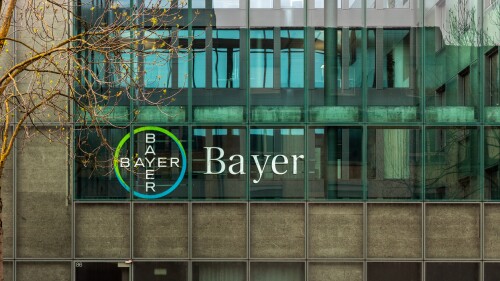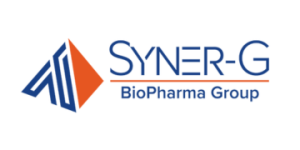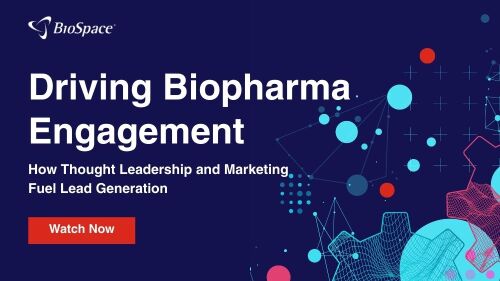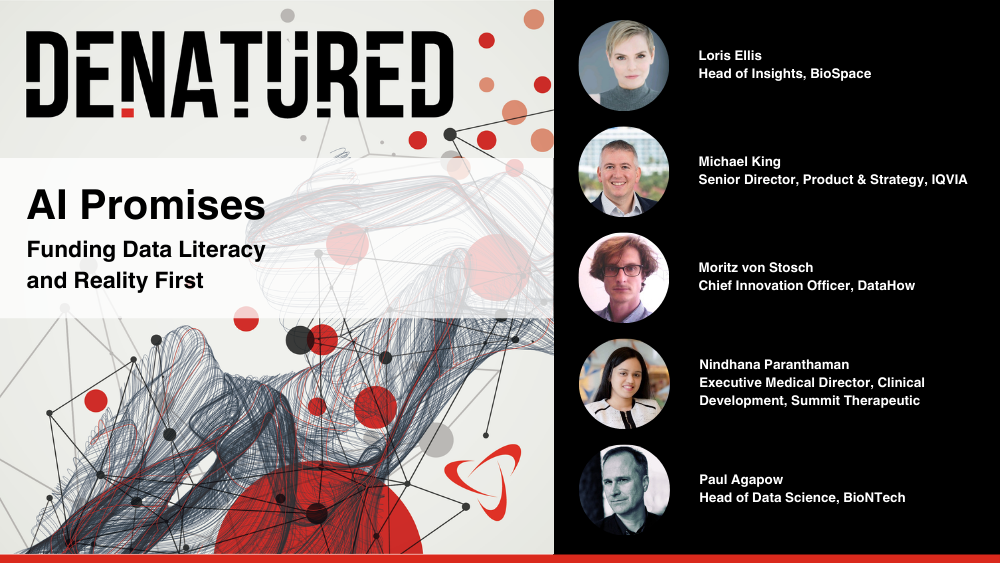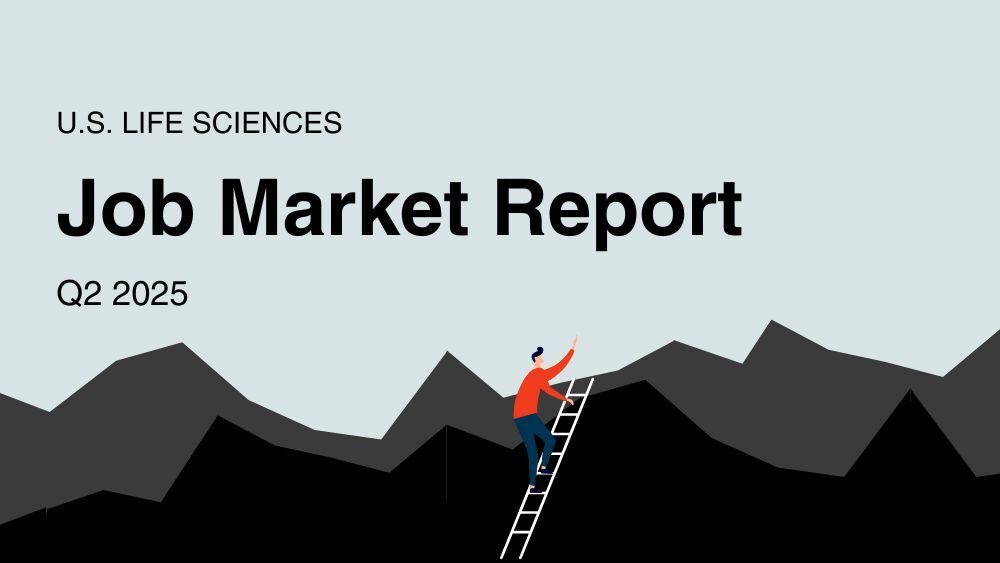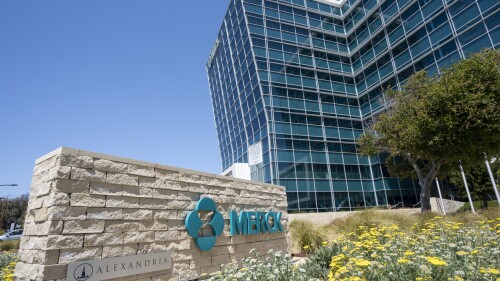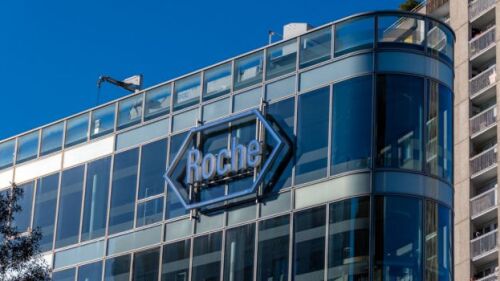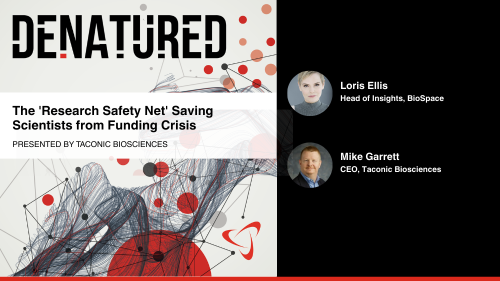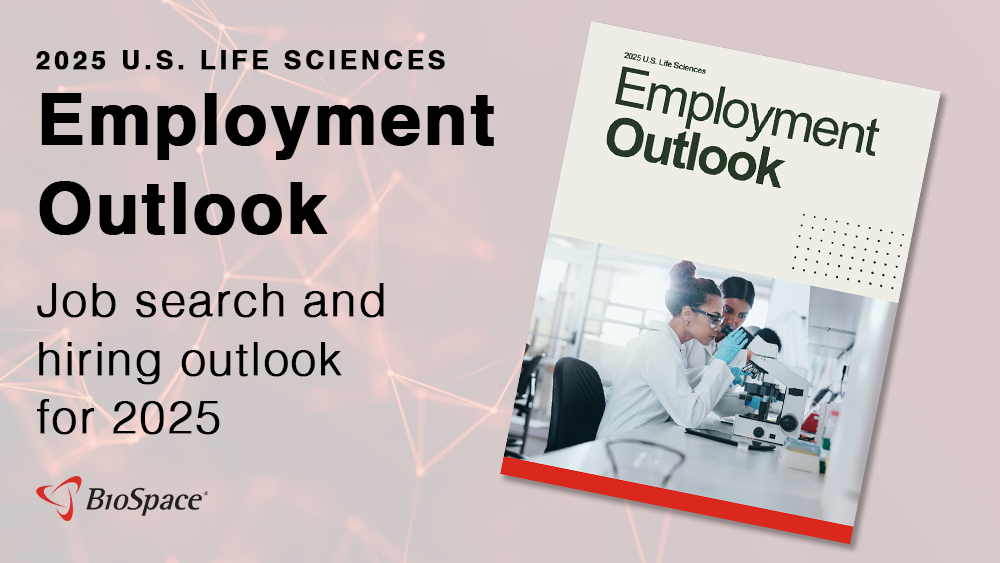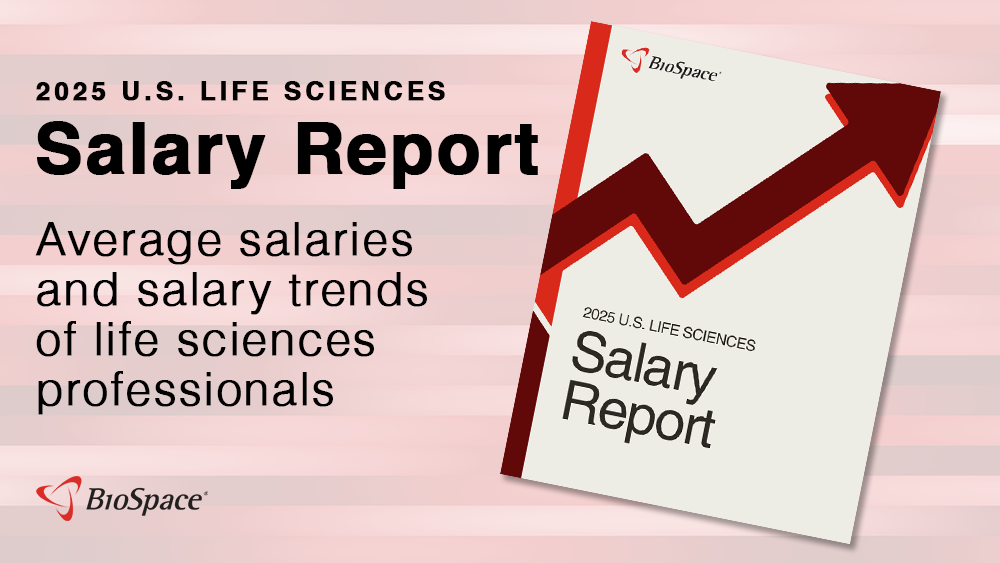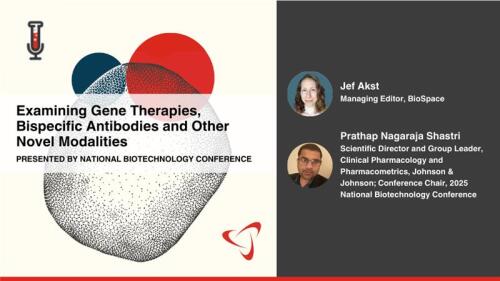Insmed’s Brinsupri is the first DPP1 inhibitor approved by the FDA and the first treatment for bronchiectasis to reach the market.
Jefferies analysts said these detailed safety outcomes confirm the gene therapy’s positive risk/benefit profile in ambulatory patients with Duchenne muscular dystrophy.
Alastair Thomson, chief data officer at the HHS sub-agency, announced his resignation in opposition to Health Secretary Robert F. Kennedy Jr.'s “stupid” decision to cancel $500 million worth of contracts focused on mRNA technology.
For $1.3 billion in aggregate—including upfront and milestone payments—Bayer will get exclusive global access to Kumquat Biosciences’ small-molecule KRAS G12D blocker.
The stop order came on Aug. 5, the same day Health Secretary Robert F. Kennedy Jr. terminated 22 mRNA vaccine projects under the Biomedical Advanced Research and Development Authority, though Vaxart’s candidate is protein-based.
The Annals of Internal Medicine ran a large-scale study in July, pointing to the lack of an association between childhood aluminum exposure through vaccination and chronic conditions. The Health Secretary, in an opinion piece earlier this month, called the paper a “ballyhooed study.”
FEATURED STORIES
With crucial lessons learned from the manufacturing shortages of injectable GLP-1s, experts say securing adequate supply of the upcoming oral options will be the sector’s next great challenge.
AbbVie’s Humira was the top-selling drug in the world for many years. Now, its sales are eroding as doctors switch to biosimilars and new options enter the market.
It’s early days for xenotransplantation, but eGenesis, Eledon, United Therapeutics and more are working to develop solutions to make this approach a viable option and help ease the organ shortage crisis.
Biosimilars are essential healthcare equalizers, but their regulation is overly complicated due to lobbying by makers of branded biologics looking to maintain blockbuster revenue.
Since 2016, the FDA has approved three disease-modifying treatments for spinal muscular atrophy, with several companies—including Novartis, Scholar Rock and Biogen—progressing novel candidates through clinical trials.
The FDA approval of Alnylam’s Amvuttra sets up a three-way race with Pfizer and BridgeBio, which both market transthyretin stabilizers for transthyretin amyloid cardiomyopathy.
LATEST PODCASTS
Infusions of Vertex and CRISPR Therapeutics’ Casgevy and bluebird bio’s Lyfgenia have begun; Moderna targets 10 approvals through 2027; more oral obesity drug data; the latest from ESMO and more.
In this episode, Lori and guests discuss practical approaches regarding artificial intelligence and investor and industry confidence in its current state.
BioMarin’s new business strategy leaves investors with questions; Lykos CEO steps down; Terns releases compelling data on oral weight loss candidate; and more.
Job Trends
Kite, a Gilead Company (Nasdaq: GILD), announced data from a pilot study in collaboration with Dana-Farber Cancer Institute that demonstrate Yescarta® (axicabtagene ciloleucel) is well-tolerated in patients living with relapsed or refractory (R/R) primary or secondary central nervous system lymphoma (PCNSL and SCNSL).
Subscribe to Genepool
Subscribe to BioSpace’s flagship publication including top headlines, special editions and life sciences’ most important breaking news
SPECIAL EDITIONS
In this deep dive, BioSpace explores the next big thing in obesity.
BioSpace did a deep dive into biopharma female executives who navigated difficult markets to lead their companies to high-value exits.
BioSpace data show biopharma professionals faced increased competition for fewer employment opportunities during the second quarter of 2025, with increased pressure from further layoffs.
DEALS
-
After four patient deaths, Kezar’s lupus trial is officially on hold, sparking investor Kevin Tang’s interest for acquisition.
-
Big Pharma can’t seem to get enough radiopharmaceutical biotechs. With Lilly, Sanofi and BMS chasing Novartis into the complex space, all eyes are on these specialty biotechs.
-
On the heels of Keytruda’s success in a Phase III perioperative trial for a disease where it had previously failed to improve event-free survival, Merck touts an I&I deal with UK biotech Mestag.
-
As traditional fundraising methods falter for smaller firms, the rise of royalty deals is reshaping how companies access capital, offering an alternative that bypasses equity dilution and debt.
-
The acquisition was featured Monday in Roche’s Pharma Day presentation, which also included projections of more than $3 billion in annual sales from three early-stage obesity and diabetes drugs.
WEIGHT LOSS
-
The updated guidance, which was largely driven by lower-than-anticipated sales of GLP-1 blockbusters Mounjaro and Zepbound, sent Eli Lilly’s shares cratering by as much as 8% Tuesday, even as the company forecasted robust 2025 revenue.
-
Biopharma executives were busy Monday, striking high-value deals and providing updates on cancer, obesity and vaccine pipelines.
-
Obesity continues to grab attention at the J.P. Morgan Healthcare Conference in San Francisco, with both Pfizer and Kailera Therapeutics outlining their plans in the space moving forward.
-
Metsera will use its IPO proceeds to fund the Phase III development of its injectable, ultra-long-acting GLP-1 therapy MET-097i, which last week achieved 11.3% weight loss in a Phase IIa study.
-
The company’s lead asset is a potentially first-in-class oral GLP-1 receptor agonist that has the potential to be dosed weekly, which according to CEO Khurem Farooq can help improve accessibility and affordability.
POLICY
-
The package revives President Donald Trump’s much-maligned Most Favored Nation rule but goes further into the private markets and beyond, leveraging the patent system, drug importation and more.
-
The FDA and CDC have also recommended pausing the use of Ixchiq in seniors 60 years and older while safety investigations are ongoing.
-
As the Trump administration slashes funding for HIV-related research and infrastructure, Gilead, Immunocore and more are targeting the next goalpost: a cure.
-
With President Donald Trump expected to deliver a drug pricing order on Monday that Big Pharma and patient groups alike have railed against, the industry’s tumultuous ride is far from over.
-
Peter Marks, the venerable head of the FDA’s Center for Biologics Evaluation and Research, has been forced out. In this special edition of BioPharm Executive, BioSpace takes a deep dive into the instability of the HHS.
Finding a new job can be a daunting task. From updating your resume to preparing for interviews, there are a lot of moving parts. To help, here are five interview techniques that actually work.
BioSpace spoke with three CEOs: Alto Neuroscience’s Dr. Amit Etkin, Omega Therapeutics’ Mahesh Karande and Rain Therapeutics’ Avanish Vellanki about their companies’ employment growth.
The life science industry is growing rapidly, and many companies have announced expansions and job creation. Still, others have been forced to cut costs and slash jobs. For that and more, continue reading.
BioSpace spoke with Jay Johnson, the Director of Talent Acquisition for Orthopedics at Stryker, to find out what it takes to land a job in medical sales.
Since 2020, the life sciences industry has worked to rebound from the COVID-19 pandemic. But one sector’s growth has far outpaced the others–the biotech industry.
Location is everything when it comes to compensation in the life sciences. We’ve compiled data from BioSpace’s 2023 Life Sciences Salary Report to help you choose the best place to live and work.
HOTBEDS
REPORTS
In this Employment Outlook report, BioSpace explores current workforce sentiment, job activity trends and the prospective job and hiring outlook for 2025, particularly as it compares to the previous year.
BioSpace’s third report on diversity, equity, inclusion and belonging in life sciences examines dramatic shifts in attitude around diversity initiatives.
CANCER
-
Eikon’s lead candidate, EIK1001, is being tested for advanced melanoma. The candidate is currently in late-stage development, which the biotech will fund using Wednesday’s series D raise.
-
At the 2025 National Biotechnology Conference, gene therapies, bispecific antibodies and other novel modalities—relative newcomers to medicine—will be much discussed. In this curtain raiser, BioSpace speaks with conference chair Prathap Nagaraja Shastri of J&J about these highly anticipated topics.
-
The agreement, in which Merck will pay the biotech an undisclosed initial sum to license drugs targeting a solid tumor, could net Epitopea up to $300 million down the line.
-
The news comes on the heels of promising Phase I/Ib data, which point to the potential of casdatifan as a more effective alternative to Merck’s Welireg in renal cell carcinoma.
-
Exelixis’ next-generation tyrosine kinase inhibitor zanzalintinib is being tested for colorectal cancer, renal cell carcinoma and head-and-neck cancer, with several readouts slated for the second half of 2025.
NEUROSCIENCE
-
Computational research conducted by scientists from Washington University in St. Louis shows that GLP-1 agonists can have mental and cognitive health benefits but may also harm the kidneys and pancreas.
-
Biogen’s effort to buy Sage reveals its “desire to expand its pipeline at a discount,” according to analysts from BMO Capital Markets.
-
As the year gets underway, analysts and biotech executives highlight cell therapy’s pivot from oncology to autoimmune diseases, a continued appetite for next-generation obesity drugs and an increased focus on neuromuscular, kidney and cardiovascular diseases.
-
Boehringer Ingelheim’s trio of late-stage schizophrenia failures on Thursday came a day after the Department of Health and Human Services hit back on the pharma’s legal challenge to the IRA’s drug price negotiation program.
-
AbbVie and Gilead are going back to their roots and leaning on their established areas of expertise to set themselves up for sustainable success in 2025.
CELL AND GENE THERAPY
-
The cancers were diagnosed 19 to 92 months after Skysona treatment.
-
Emboldened by technological advances and a deeper knowledge of glioblastoma, Merck, Kazia Therapeutics, CorriXR Therapeutics and others are targeting the often-fatal brain tumor.
-
Despite the death, the FDA has allowed Neurogene to forge ahead with the Phase I/II Rett syndrome trial, but using only the lower 1E15 vg dose of its investigational gene therapy NGN-401.
-
Novartis’ up to $1.1 billion acquisition of gene therapy specialist Kate Therapeutics fits with the pharma’s plan to expand its new modality pipeline to ensure long-term business sustainability.
-
Investigational CAR T therapies stole the spotlight at the American College of Rheumatology Convergence as data presented by Bristol Myers Squibb, Kyverna Therapeutics and more highlighted their potential to effectively treat lupus.







